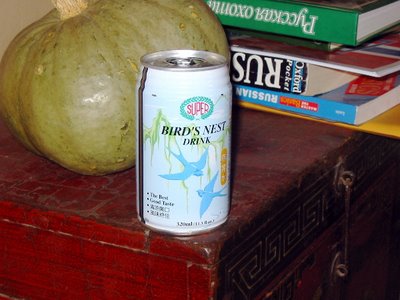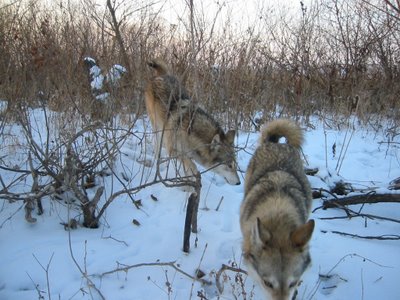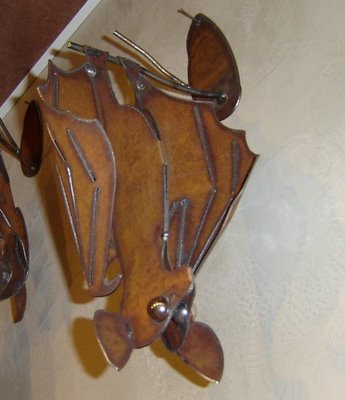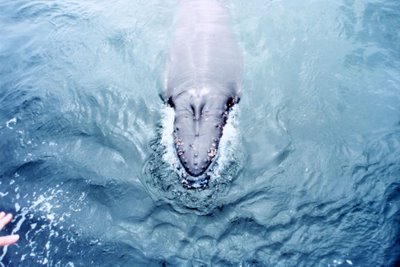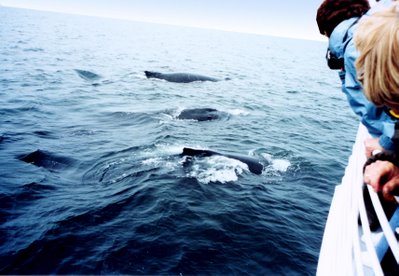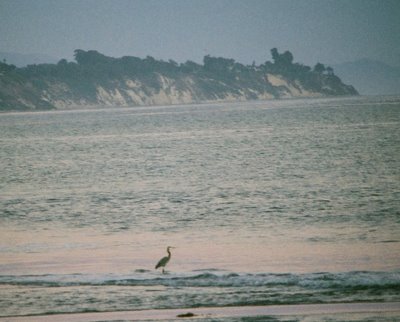For the best words on Magdalena and thereabouts, I recommend you first to Steve. His vivid descriptions of the place--his base camp for more than twenty years--provide evocative settings for many of his published works.
Though Steve travels widely, his frequent musings on what's familiar or different about each place he visits suggest his mind is never far from home. He sees high, dry, wild Central Asia in the Magdalenian countryside, for example, and shades of Magdalena elsewhere.
I knew from reading him that when I saw his New Mexican village, I would recognize it instantly. Libby's directions seemed to anticipate that I would:
"Way easy to get here: Go to Socorro. The main street through Socorro is California Street. If you are coming form the north, get off at the second Socorro exit, which is at the south end of town. It will loop you around to the north. At the first stoplight, take a left. That will put you on Highway 60 heading to Magdalena. It's about 26 miles -- just keep going across La Jencia Plain, which is quite gorgeous. Go into the middle of Magdalena.
(Snip)
"If you get messed up for some reason, ask. But you won't."
I didn't have to ask. But as I discovered later, anyone in town could easily have directed me to Casa Bodio, no street names or house numbers needed. They might have said, "The rock house, across from the Spur. With pigeons."
When I pulled up, I could see Steve through the window, reading. We met at the door and shook hands, which clambered into a kind of awkward hug. Steve and I are friends and partners in the virtual world; but in the real world, virtual strangers. Odd how the Internet can do that.
No photos inside the home.
It's permissible, I think, to be a tourist and a pilgrim (I was), but unpardonable to make a curio of your host. Still, it was hard to resist taking photos. The Bodio place is just too cool.
Imagine a wizard's cottage (oldschool, like 15th Century) with wood plank shelves packed tight with great books, bottled spices, animal skulls and small, hand-carved totems. Beautiful and bizarre art hangs on the walls, and rugs like tapestries. Each room is small and distinct and seems to contain its own spirit. Or maybe, if Rebecca O'Connor is right, its own ghosts. I am not exaggerating: the Bodio home is unique.
Release the hounds!
I know he told me, and I met them, but I forget exactly how many dogs Steve and Libby have. Maybe six or eight, most of them sighthounds, with the notable exception of the ancient, saintly Dachshund, Lily.
All are loved, but there are favorites: Ataika, the whippet-sized Tazi and the much larger Lashyn are mostly indoor dogs, as is the Dachs. The rest of the pack lives (happily, riotously) in the fenced backyard with the garden, shade trees and the pigeons. I received aloof scrutiny from the three indoor animals and then a wild reception from the pack outside, an almost-attack led by Plummer, the very macho lurcher.
Back in the kitchen, Steve tended a dish of braised oxtail in reduced wine sauce, a Bodio specialty that he describes as "coming from the damndest part of the cow." Libby whipped up mashed potatoes ("Nothing fancy," she insisted--but there were at least half a dozen ingredients.) Later, as the vodka settled and the sauce cooled on the plates, all that remained of the meal were large, disarticulated vertebrae.
The Golden Spur.
Steve wonders what the fascination is. It's just a bar. But a man's watering hole is a special place, and all of us who frequent one can appreciate that. Mine is in New Orleans, an inconvenient eighty miles away. Steve's is right across the street. When I offered to drive us, Steve just laughed and pointed.
The interior was a surprise. It was...nice. Not fancy, but refurbished, and this was a great disappointment to the regulars, who would rather have it like it was.
Steve explained that the old bar was under new management, which opened a discussion on the nature of "Nuevos," new New Mexicans who bring to town their own ideas of how the place should be. Steve pointed out that most everyone was an immigrant anyway, but still, that was generations ago. This is different. True nativity depends on your objectives and where your loyalties lie. It proved a hot topic at the Spur and lasted us most of the night and any number of drinks.
Around 3AM the following morning, long after leaving the Spur, I woke shaking in the guesthouse next door. The immaculate little cottage is run as a renter by the Bodio's next-door neighbors. It is better than any hotel, and I highly recommend it. It is also haunted.
Rebecca O'Connor shared the story with me once in Amarillo. She has slept in the same guesthouse three times now and with a straight face claims the place has ghosts. One of them woke her late in the night, pressed its face to hers and whispered some cryptic apology. Scared the hell out of her. My own ghost, I swear it, sat at the kitchen table, solemnly smoking a cigarette in the dark.
Since I was up, I went outside to check the truck. I had embarrassed Steve earlier by locking it as we left for the bar. I'm from a part of the country that rewards good will with grand theft auto; securing my possessions is a natural precaution, like living in bear country. Of course, the truck was unmolested, locked in a seamless layer of frost. Looking up, I faced a shocking field of stars. The nearest one was nearly close enough to touch.
First light found us in the backyard with dogs pressing in and out of our legs and pigeons wheeling overhead. Libby's strong coffee, the first brew with any body I've tasted west of the Mississippi, scalded my hand when Plummer pushed against me for attention.
"We have a friend just like him," said Libby.
We spent the rest of the morning outdoors. Steve and I loaded Lashyn and Ataika and drove them to the hills for a run. The dogs bounced lightly on their hydraulic struts, covering the country with a gait that might take them miles without perceptible effort. Steve's own step was lively, and he gave running commentary on the dogs' behavior as I huffed along behind him. I was ashamed to find myself falling behind. There's less air up there than I'm used to breathing.
We didn't flush any jackrabbits (Steve calls them hares, which is more correct) but had a good walk and a photo op. We drove then to a rise at the rim of La Jencia Plain on a ranch owned by a friend. The spot wasn't very far away, by truck, but impossible to cover on foot in less than a day, which I didn't have. Note: Everything "out west" is easier to reach in a truck.
At the top of the rise in the middle of the Plain was a cattle tank, surrounded by a panorama of rolling hills and mountain peaks. Inside this tank, unaccountably, swims a school of giant goldfish. Steve was as delighted to show me those fish as to show off the view. I should have taken their picture, and realize now that by shooting the panorama instead (merely breathtaking), I marked myself a tourist. Next trip I'll shoot the fish.
Steve had much more to show me: a peregrine eyrie on a far peak, rare books and monographs, more hills, another crack at the hares and more vodka. I could have stayed but had left my own dog and hawk with friends in Albuquerque.
We lingered after lunch, looking at digital photos of trained eagles and old friends, some of them mutual. A couple years ago, the same computer screen delivered to Steve my first emailed "Hello" and his gracious reply. We shook hands again at the door and said goodbye, for now. The second hug was easier.









